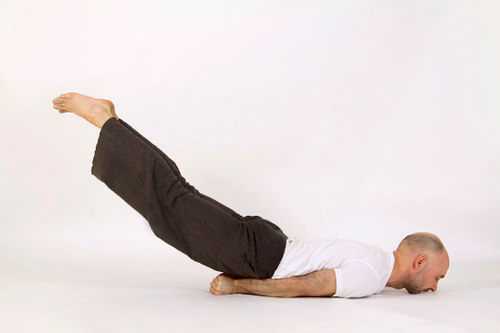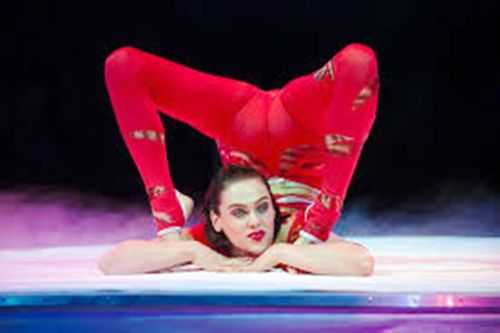

Shalabhasana
«Shalabhasana», the «Locust», is one of the 84 main Asanas and the 32 particularly useful Asanas for humans. In addition, «Shalabhasana» is the 7th Asana of the 12 basic postures of the Yoga Vidya Basic Series.
Table of Contents
1 Instructions for Shalabhasana or the Locust Exercise
2 Video Tutorials from Sukadev for Shalabhasana
Exercise Video for the Half Locust — Practical Instructions (Excerpt from a Yoga Beginners Lesson)
2.2 Exercise Video for the Classic Locust, Shalabhasana — Practical Instructions (Excerpt from a Yoga Beginners Lesson)
2.3 Exercise Video Advanced Locust: Shalabhasana
2.4 Exercise Video for the Locust: Shalabhasana with Aids
3.1.1 Stretched Muscles
3.1.2 Strengthened Muscles
3.2 Mental Effects
3.3 Energetic Effects
4 Swami Sivananda on Shalabhasana
5 Sukadev on Shalabhasana
Instructions for Shalabhasana or the Locust Exercise
Standard Announcement
- Lie on your Abdominal Position.
- Bring your arms together under your belly, stretched out in front of your pelvis.
- Fold your hands together, make fists or place your hands flat on the ground, as is comfortable for you, but make sure that you can support yourself with your arms in this position.
- With the next inhalation, build body tension, press your arms into the ground and lift your legs up as far as you can.
- Those who are advanced bring their feet towards the head.
- Hold «Shalabhasana» in as long as you can, while breathing deeply and evenly.
- If you can no longer hold back, put your legs down again with the next exhalation, bring your arms next to your body and trace it.
 «Half Locust», an easier variant, especially for beginners or as a Preliminary Exercise
«Half Locust», an easier variant, especially for beginners or as a Preliminary Exercise
Video Tutorials from Sukadev for Shalabhasana
Exercise Video for the Half Locust — Practical Instructions (Excerpt from a Yoga Beginners Lesson)
Here Sukadev instructs you to the Yoga Exercise of the «Half Locust» and shows you how you can practice the exercise optimally.
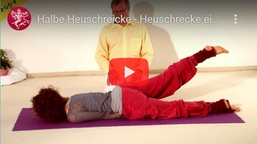
 |
 |
Exercise Video for the Classic Locust, Shalabhasana — Practical Instructions (Excerpt from a Yoga Beginners Lesson)
Here Sukadev guides you to the Classic Basic Position of the «Locust» and shows you how to optimally perform the exercise.
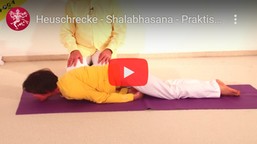
 |
 |
Exercise Video Advanced Locust: Shalabhasana
The Advanced Variant is shown here, followed by the Beginner Variant.
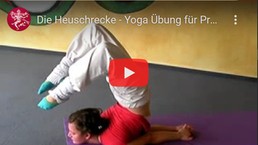
 |
 |
Exercise Video for the Locust: Shalabhasana with Aids
«Shalabhasana Variation» with pillows.
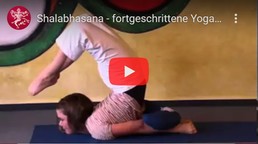
 |
 |
Effects of Shalabhasana
Physical Effects
«Shalabhasana» particularly strengthens the back and gluteal muscles. Back pain and sciatic pain go away in no time. As with the «Cobra», the pressure on the abdomen is increased, thereby regulating and strengthening the function of the intestine. The liver, pancreas, and kidneys are massaged.
Stretched Muscles
- Quadriceps (leg extensor)
- Psoas (hip flexors)
- Rectus Abdomini (abdominal muscles)
- possibly Pectoralis (large chest muscle)
Strengthened Muscles
- Longissimus (back extensor)
- Gluteus (buttock muscles)
- Delta Muscles (shoulder muscles)
- Pectoralis (chest muscles)
- Triceps (arm extensor)
Mental Effects
«Shalabhasana» develops willpower, self-confidence and assertiveness.
Energetic Effects
«Shalabhasana» has a strong activating effect and opens the Chakras in the subtle spine, «Sushumna», especially the «Vishuddha Chakra».
Swami Sivananda on Shalabhasana
When shown in this pose, it is reminiscent of a locust. Hence the name Salabha, the locust. Lie on your back with your face facing the ground. The hands are on the sides; the palms turned upwards. You can also put your hands under your belly. That is another possibility. Inhale gently and completely (Puraka). Hold your breath until you come out of the Asana (Kumbhaka) and then slowly exhale.
Tense your whole body and straighten your feet upwards about 30 cm. Raise your head like in «Bhujangasana». The thighs, legs and toes remain as described above. The soles of the feet point towards the ceiling. Raise your legs, thighs, and lower abdomen. Do this Asana for 5 to 30 seconds. Then exhale very slowly. You can repeat this process 6 to 7 times. You can also keep your hands on the ground next to your chest. The palms face down while you do the Asana.
This Asana represents a backward curve for the spine. It is a backward bend of the spine. By bending the spine backwards, this is a counter-position to «Paschimottanasana», «Halasana» and «Sarvangasana», which all bend the spine forwards.
Like the «Mayurasana», it improves the pressure inside the abdomen. It complements «Bhujangasana». «Bhujangasana» develops the upper half of the body, while «Shalabhasana» develops the lower half of the body and also the lower extremities. It increases the resilience of the muscles of the abdomen, thighs and legs. It brings the accumulated fecal matter from the stomach to the ascending large intestine, from the ascending large intestine to the transverse large intestine, from the transverse large intestine to the descending large intestine and from there to the rectum. Read a book on elementary physiology. It will help you a lot.
This Asana is a good exercise for the abdomen. It resolves constipation. It gives mood to the abdominal organs (viscera), i.e. liver, pancreas, kidneys, etc. It removes various diseases of the stomach and intestines. It heals sluggishness from the liver and the hunchback, the lumbosacral bones are toned, lumbago disappears. All forms of muscle tension from the lumbar region (hips) are removed. The digestive fire is kindled. Digestive weakness will be removed. You will have a very good appetite.
Sukadev on Shalabhasana

 |
 |

